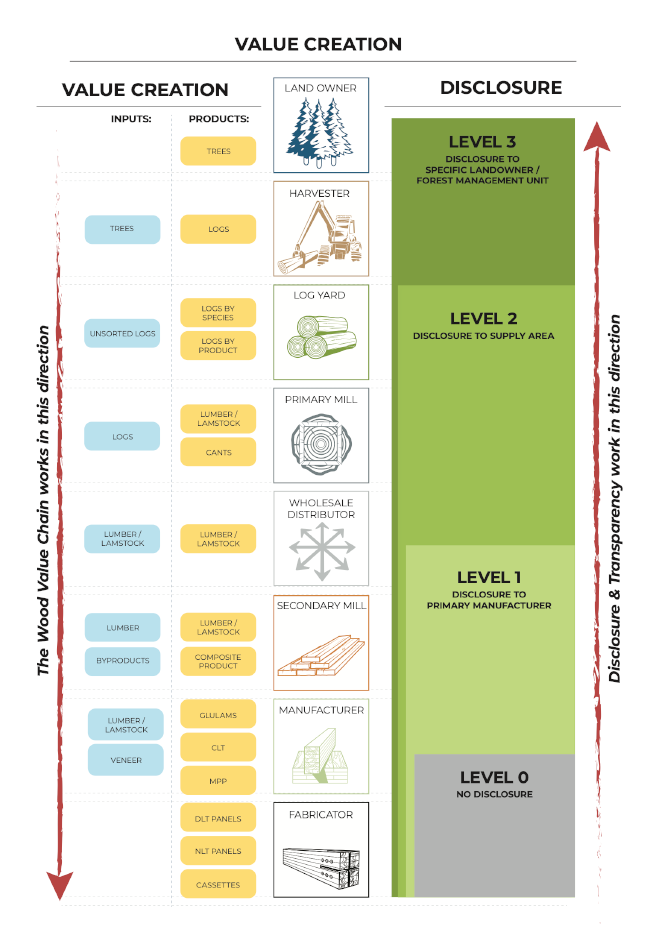
What are “traceability” and “transparency,” and why are they foundational?
A typical wood product supply chain involves a diverse combination of timber owners and harvest practices, the raw logs resulting from which are commonly aggregated at a primary mill that produces boards of varying grade and intended use. In the simplest case, these boards are ordered directly by a mass timber manufacturer and the end product is fabricated to meet a project’s design requirements. However, there may be many other twists, turns, and links in the chain.

©2024 Climate Smart Wood Group. All rights reserved. Privacy Policy
